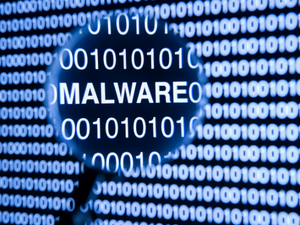 In today's digital landscape, businesses face a myriad of cyber threats that can compromise their operations, reputation, and data security. One such emerging threat is malvertising, which has become increasingly prevalent since the late 2000s. For business owners, CEOs, and decision-makers, understanding and mitigating the risks associated with malvertising is crucial for safeguarding your enterprise. This guide will provide valuable insights into malvertising and actionable steps to protect your business.
In today's digital landscape, businesses face a myriad of cyber threats that can compromise their operations, reputation, and data security. One such emerging threat is malvertising, which has become increasingly prevalent since the late 2000s. For business owners, CEOs, and decision-makers, understanding and mitigating the risks associated with malvertising is crucial for safeguarding your enterprise. This guide will provide valuable insights into malvertising and actionable steps to protect your business.
What is Malvertising?
Malvertising, a blend of "malicious" and "advertising," refers to the practice of embedding malware into online advertisements. These malicious ads can appear on both legitimate and fraudulent websites, tricking users into clicking on them and inadvertently downloading harmful software. The consequences can be severe, ranging from data breaches to significant reputational damage.
How Malvertising Works
Malvertising exploits vulnerabilities in advertising networks to deliver malware to unsuspecting users. It primarily operates through two major channels:
1. Malvertisements on Malicious Websites
Cybercriminals create fake websites that closely resemble legitimate ones, aiming to deceive users who mistype URLs or fall for phishing scams. For instance, mistyping "putty.org" as "puuty.org" can lead to a fake site designed to distribute malware. Such typosquatting tactics are common and effective in targeting busy professionals who might overlook subtle differences.
2. Malvertisements on Legitimate Website
Even trusted websites can fall victim to malvertising. Hackers inject malicious code into ads displayed on reputable sites, exploiting vulnerabilities in ad networks. Users who click on these ads can be redirected to malicious websites or have malware installed on their devices. This can happen through:
- Display ads
- Banner ads
- Video ads
- Other clickable ad formats
Recognizing Malvertising
Identifying malvertising can be challenging, but there are telltale signs that can help you and your employees spot these threats:
-
Misspelled URLs or ad copies: Subtle typos in URLs or advertisements can indicate a fraudulent site.
-
Unprofessional page layouts: Poor design and layout can be a red flag.
-
Tempting ads with unrealistic promises: Offers that seem too good to be true often are.
-
Deals that are too good to be true: Be wary of exceptionally attractive deals, especially from unfamiliar sources.
 Protecting Your Business from Malvertising
Protecting Your Business from Malvertising
To mitigate the risks associated with malvertising, consider the following strategies:
1. Choose Reliable Ad Networks
Work with reputable ad networks that have robust security measures in place. Conduct thorough due diligence and ensure that the ad network regularly scans for malicious activity.
2. Implement Strong Cybersecurity Practices
Ensure your business follows best practices in cybersecurity, including:
Regular software updates: Keep all software, including web browsers and plugins, up to date to protect against vulnerabilities.
Antivirus software: Install and maintain reliable antivirus software on all devices to detect and neutralize malware.
Employee training: Educate employees about the risks of malvertising and train them to recognize suspicious ads and websites.
3. Monitor and Scan Ads
Regularly monitor and scan ads for malicious code before they are uploaded to your site. Employ cybersecurity professionals to assist with this process and provide ongoing support.
4. Use Ad-Blocking Software
Consider using ad-blocking software to prevent malicious ads from being displayed on your business's devices. While this may not be feasible for all businesses, it can add an extra layer of protection.
The Importance of Cyber Hygiene
Maintaining good cyber hygiene is essential for protecting your business from malvertising and other cyber threats. Here are some additional tips to enhance your cybersecurity posture:
Update extensions and plugins: Ensure all browser extensions and plugins are up to date and sourced from reputable developers.
Secure your network: Use firewalls, secure Wi-Fi networks, and virtual private networks (VPNs) to protect your business data.
Back up data: Regularly back up important data to prevent loss in case of a cyberattack.
Conduct regular security audits: Perform periodic security audits to identify and address potential vulnerabilities.
Let's Recap
Malvertising is a growing threat that can have devastating effects on your business. By understanding how malvertising works and implementing strong cybersecurity practices, you can protect your business from these malicious attacks. Regularly updating software, choosing reliable ad networks, educating employees, and maintaining good cyber hygiene are essential steps in safeguarding your enterprise.
Staying vigilant and proactive in your cybersecurity efforts will not only protect your business from malvertising but also contribute to a more secure digital environment for everyone.
